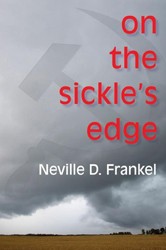In April 1903, Easter time, in the Bessarabia province of Russia, the Kishinev Pogrom continued for three days and left forty-nine Jews murdered, hundreds injured, and homes and businesses destroyed. It was a prelude to what the twentieth century would bring.
Russian Jews lived in a precarious world, “saturated with hate,” where superstitions, rumors, and marketplace gossip replaced truth. The main sources of information were the virulently anti-Semitic newspapers whose banner headlines constantly fed fear and hatred to the peasants and government officials. They fueled Russian nationalistic fervor by blaming Jews for all of Russia’s ills. There are no heartwarming Sholem Aleichem tales here.
The Dubossary incident, in a village about twenty-five miles north of Kishinev, is the focus of the first portion of the book. A fourteen-year-old Christian boy is murdered. Village life and prejudices, family intrigue, corrupt officials, and the infamous ages-old blood libel lie all conspire to bring the situation to the brink of a pogrom. Although the Jews are generally blamed, some see through the lies and the incident passes.
But in Kishinev, the Dubossary furor, outside agitators, intimidation, and an unresponsive military do produce a well-planned pogrom. The “Zhids” are accused of tearing the Russian world apart, and Sandler provides the historical background and gripping eyewitness accounts of the victims and victimizers. Narratives of terror, murder, and also resistance are related in relentless detail.
Boris Sandler, a writer, filmmaker, and editor, has written a historical novel that could aptly be titled Anatomy of a Pogrom. Sandler expertly weaves a fascinating, factual, analytical, and human account of how and why this pogrom occurred where and when it did. Stones Don’t Bear Witness presents the evidence and scenarios in a well-researched “you are there” style that should satisfy historians and interested readers alike.
Renita Last is a member of the Nassau Region of Hadassah’s Executive Board. She has coordinated the Film Forum Series for the Region and served as Programming and Health Coordinators and as a member of the Advocacy Committee.
She has volunteered as a docent at the Holocaust Memorial and Tolerance Center of Nassau County teaching the all- important lessons of the Holocaust and tolerance. A retired teacher of the Gifted and Talented, she loves participating in book clubs and writing projects.





